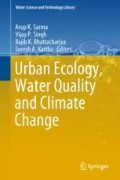Abstract
The abundance of studies on the memory of architecture in recent years as well as a growing preoccupation for ecological approaches represent the premises of the present study. In particular, French architect Jean Nouvel’s work of the last two decades, the two issues intermingle in an apparent paradox. On one hand, his preoccupation for context as a major condition for the creative process breaks from the classical tradition of visual and historical references, and in general, from any form of art history and aesthetics. The use of vegetation appears as a natural solution. On the other hand, the temporal dimension, intrinsic to a memory value attributed to the idea of monument, operates profoundly in the possibility of this superposition of context and vegetation. The paper tries to establish a common ground of temporality between the two which may become relevant for a new contemporary understanding of the memory of architecture and to determine its relation with the past. This has been done following his theoretical discourse as well as his architectural projects, also comparing the grounds of his thesis with reflections on the concept of context expressed by Frampton, Rossi, Eisenman, and Sola Morales. Paul Ricouer’s work on memory fundaments the idea of a happy memory, unchallenged by the burden of the past, perceived as an anteriority that has been, rather than one that no longer is. The study wishes to reveal a form of understanding memory, specific to weak architecture and Deconstructivism, based on the idea of becoming and integrating forgetting as an acceptance of the fragile condition of city, architecture, and vegetation alike.
Access this chapter
Tax calculation will be finalised at checkout
Purchases are for personal use only
References
Baudrillard J, Nouvel J (2000) Singular objects. University of Minesota Press, Mineapolis
Bourgeois L (1999) Interview with Josef Helfenstein, New York, 31 Mar 1999. Louise Bourgeois: memory and architecture. Museo Nacional Centro de Arte Reina Sofía. Aldeasa, Madridm, p 26
Casey E (1193) Getting back into place—toward a renewed understanding of the place-world. Indiana University Press, Bloomington
Cauquelin A (2000) L’invention du paysage. Quadrige, Puf
de Sola Morales I (1998) Weak architecture. In: Hays M (ed) Architecture theory since 1968. The MIT Press Cambridge, London
Deleuze G (1985) Cinema 2: l’image temps. Les Editions de Minuit, Paris
Deleuze G, Guattari F (1980) Capitalisme et Schizophrenie 2. Mille Plateaux. Editions de Minuit, Paris
Derrida J (1987) Maintenant l’architecture. In: Psyché. Inventions de l’autre. Galilée, Paris, pp 477–492
Eisenman P (1996) The end of the classical: the end of the beginning, the end of the end. In: Nesbitt K (ed) Theorizing a new agenda for architecture: an anthology of architectural theory 1965–1995. Princeton Architectural Press, New York
Frampton K (1983) Towards a critical regionalism: six points toward an architecture of resistance. In: Foster H (ed) The anti-aesthetic. Essays on postmodern culture. Bay Press, Port Townsend
Garcia GE, Moreno CD (2002) Interview [A conversation with Jean Nouvel]. El Croquis: Jean Nouvel 1994–2002, 112/113
Paterson S (1995) Critical analysis of “towards a critical regionalism” by Kenneth Frampton. http://home.earthlink.net/~aisgp/texts/regionalism/regionalism.html
Ricoeur P (2000) La mémoire, l’histoire, l’oubli. Seuil, Paris
Rossi A (1984) The architecture of the city. The MIT Press, Cambridge
Vidler A (1998) The architectural uncanny: essays in the modern unhomely. In: Hays M (ed) Architecture theory since 1968. The MIT Press, Cambridge
Author information
Authors and Affiliations
Corresponding author
Editor information
Editors and Affiliations
Rights and permissions
Copyright information
© 2018 Springer International Publishing AG, part of Springer Nature
About this chapter
Cite this chapter
Todoran, S.M. (2018). The Use of Vegetation as Expression of a Happy Memory in Jean Nouvel’s Recent Projects. In: Sarma, A., Singh, V., Bhattacharjya, R., Kartha, S. (eds) Urban Ecology, Water Quality and Climate Change. Water Science and Technology Library, vol 84. Springer, Cham. https://doi.org/10.1007/978-3-319-74494-0_3
Download citation
DOI: https://doi.org/10.1007/978-3-319-74494-0_3
Published:
Publisher Name: Springer, Cham
Print ISBN: 978-3-319-74493-3
Online ISBN: 978-3-319-74494-0
eBook Packages: Earth and Environmental ScienceEarth and Environmental Science (R0)

